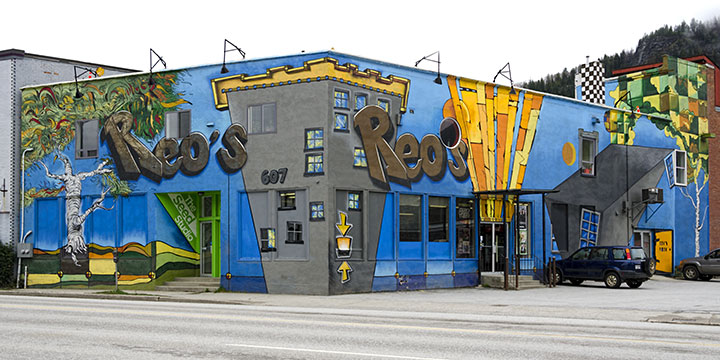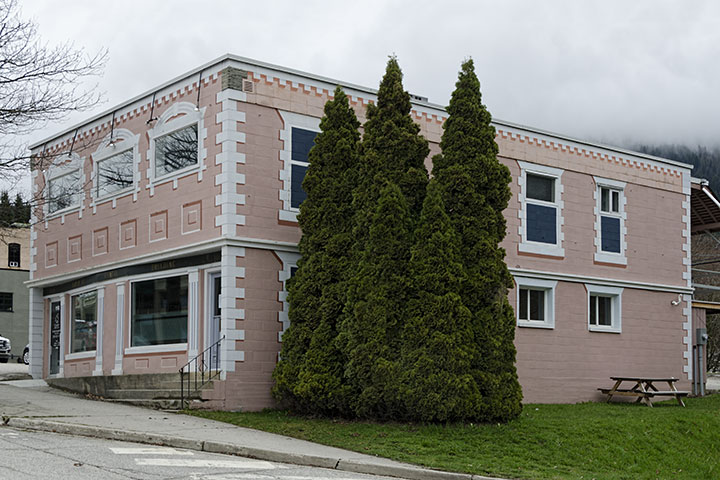Kate Bridger is a local artist and author. Her recent article in the Nelson Star discussed trompe-l’oeil—the ancient art of painting a building with such realism that the eye is tricked into believing the structure has three-dimensional features that it does not. She gave a nice overview of the technique and offered examples, her local one being Reo’s Video at 607 Front Street.
Now, I am a fan of trompe-l’oeil and have long admired what I had considered Nelson’s only representative: a building at 110 Baker Street housing a dentist’s office. It’s not that I was unfamiliar with Reo’s, but had always assumed that its decor was chosen more to amuse the eye than to trick it.
Reo’s Video certainly has a delightfully evocative paint job, but the design is purposely cartoonesque. It is unlikely to trick anyone into imagining that its painted features are real. Yet, it does amuse.

There is a local building with faux structures that is much more likely to fly under the radar. The Dental Building at 110 Baker not only has fake windows mixed in with its real ones, but even real windows with fake features such as lintels. Indeed, this building also tricks the eye with its painted anchor plates, pillars, and arcades.

Now, if there there is a nicer example of trompe-l’oeil in Nelson, I don’t know of it. Of course, some building may have been so cleverly disguised that I have yet to spot it for what it is. Does anyone know of other regonal examples?

Trompe l’oeil, in my experience, often goes further and convinces the onlooker that IMPOSSIBLE structural features obtain. Escher is often described in these terms.
Doug, as far as I know, Escher never painted a building.
He may have never painted a building but he did several sketches of convincing but impossible buildings.